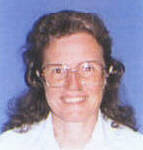Old potions dressed up to cost more
As we all know, the poor drug companies spend many years and many millions (or billions) of dollars creating a new drug. Then as soon as a patent is granted and the product is launched, all these upstart generic drug companies come along, and like circling sharks they wait for the patent to expire. As soon as it does, the generics hit the market and undercut the price until they start selling more of the product than the former patent holder does.
At that point what do the drug giants have to show for all their efforts? Just a few billion dollars in profits and a drug they can no longer call their very own. But before you start to feel too sorry for them... There's a nice little loophole they can put to use that extends the life of a drug's patent for two and a half years. And when the drug is a popular, high-profile product, that can mean a very lucrative final run at huge profits before the final bell rings.
Playing dress up
The loophole is simple and effective: Claiming that their drug has a new use or a newly added chemical property, the drug company applies for a patent extension. Now that may sound reasonable, but consider this: the patent can even be extended if the only change is a new packaging of the drug.
When the extension is granted the "reformulated" drug has 30 additional months of peak earning power before the generics close in for the kill and bring the price down to earth. Of course, patents can be extended only if the FDA approves the reformulated drug. But this would appear to be a mere rubber-stamping formality. Just look at the numbers.
Between 1989 and 2000, a full two-thirds of all the prescription drugs approved by the FDA were nothing more than modified versions of existing drugs. And some of them weren't even modified - they were identical to drugs already on the market.
Meanwhile, only a scant 15 percent of the drugs approved during that period could be considered genuinely "new."
Naming names!
Among the popular reformulated drugs currently on the market there are some brand names I'm sure you'll recognize. The allergy drug Claritin, for instance, was reformulated to become Clarinex. Prilosec, an ulcer medication, became Nexium - the purple pill. And (this is my favorite) Sarafem, prescribed for relief of premenstrual irritability, is a pink and lavender capsule that is otherwise identical to one of the true celebrities of prescription drugs: Prozac. Prozac! So they made the pill prettier and got a new slogan, forcing users to pay patent prices for two and a half more years. (I wonder how these irritable women would react if they had any idea they were actually being given Prozac.)
All of this information comes from a 2002 research report from the National Institute for Health Care Management Foundation, a non-profit organization that promotes improvements in health care access, management and quality. The report also found that the so-called "new" drugs with modified formulas were priced much higher than the drugs they replaced. In other words, the drug giants take their star performers, dress them up in their Sunday best, and then jack up the prices - all with the formal blessing of our friends at the FDA.
If you must rely on a prescription drug, ask your doctor about the specific history of the drug. Otherwise you might get Prozac, renamed and dressed up in a colorful new and more expensive package. ..
Labels: drug patents, FDA, generic drugs, Pharmaceuticals

